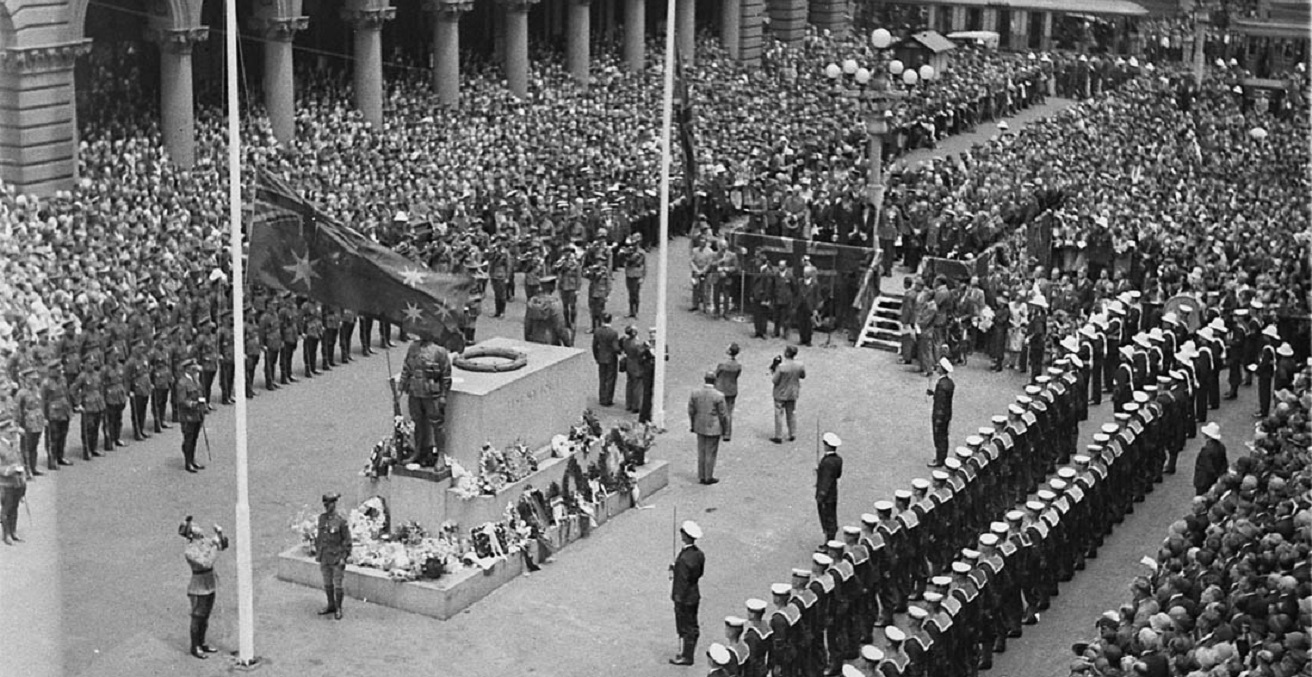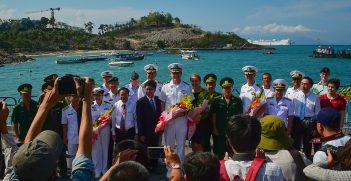Australia's Foreign Policy Déjà Vu

2017 was a year among many that continued to cast doubt on the durability of the existing international order. Worrying parallels can therefore be drawn with the tumultuous 1930s and they paint an eerily familiar picture.
In the international sphere there are undoubtedly many parallels between the circumstances of today and of the 1930s. The invasion of Iraq in 2003 was a challenge to the collective security function of the United Nations as surely as the Italian campaign of annexation waged in Ethiopia in 1935-36 dashed the hopes of those who sought collective security from the machinery of the League of Nations. The extreme trade barriers erected following the onset of the great depression in 1929 have no ready modern analogue. However, the reverse in the course of globalisation signalled by the abandonment of the Trans-Pacific Partnership and the undermining of the World Trade Organization are reminders that the United States is as capable today of cleaving to policies of economic mercantilism and protectionism as it was in the era of the Smoot-Hawley tariff of 1930.
In the 1930s democracy was directly confronted by ideological rivals. Here the terrain of the present is more complex. Despite the persistence in China of a form of authoritarianism more characteristic of a former era, the regime is not committed to an official doctrine of displacing democracy outside its borders (though inside them is altogether another matter). Nevertheless, populist political movements across the European Union (including now in Germany), in Russia, in Turkey, as well as the United States are a reminder that democracy is a form of government that requires constant re-invention.
In the 1930s there were those who held that the upheaval of the Great Depression found democracy wanting, a notion that has extensive modern resonances. Among Australian observers of the United States, there are differences on whether the current state of the American political system has brought to the fore tendencies that were always present or whether it is without precedent. While it is far from clear whether the Trump administration will run its full course, it is surely remarkable that in a political system long held to be an exemplar of republican constitutionalism, its current leader feels no need to distinguish between the duties of his public office and the interests and personnel of his household and businesses. If American constitutionalism fails then its defence in Australia will be an immensely more difficult task (of which the current citizenship fiasco of parliamentarians may be a foretaste). To this extent, anxieties in Australia in the 1930s regarding the curtailing of democracy in Europe have their counterpart today.
In the Asia-Pacific region, there are specific parallels with the 1930s, raising concerns no less grave. In short, Australia is now faced—as it was eight decades ago—with the need to maneuver between the powers while having to confront the erosion of old certainties.
John Howard used to claim that there was no necessity for Australians to choose between their history and their geography. Necessary or not, there have been instances of this choice being made, notably by Curtin in his ‘look to America’ doctrine of 27 December 1941, and by Spender and Menzies in the formation of the ANZUS alliance. Australia, in effect, abandoned a declining power and patron for its supplanter. But the choice of the Pacific power, the United States, was a relatively painless task. Given the enmeshment of British and American security, commercial and cultural interests, slipping into the American orbit was almost a family affair. It should not be forgotten that the mother of Winston Churchill, the Empire’s most fierce defender, was American heiress Jennie Jerome.
In the 1930s Australia’s leaders saw their situation in a different light, faced with the uncongenial facts of the rising power of Japan and the evident incapacity of the British Empire to defend all of its far-flung territories. Despite the emerging primacy of the United States in the Pacific economy, Britain was still Australia’s dominant trading partner through even into the 1950s. By the early 1930s however, the British connection faced a rival. Japan’s rapid industrialisation began to attract significant volumes of Australian exports, principally wool and minerals. Australia also became a growing market for many of Japan’s light industrial goods. What was to be done with this growing trade complementarity, given that it was perceived to be undermining Empire trading links? In brief, Canberra quite suddenly in 1936 placed prohibitive restrictions upon exports of Japanese textiles even though Australia enjoyed a positive and sizeable balance of trade with Japan. A trade war followed; harsh words were exchanged. Though a truce was eventually declared, the arguments of those in Tokyo who favoured political and military expansion and the creation of an autarchic Asian empire were further strengthened. American exporters were also offended by restrictions on imports of some other industrial commodities. Consequently, Australian trade privileges in the United States were withdrawn.
The parallels with the current situation deserve some attention. First, Australia was dealing with a rapidly industrialising regional economy. Australian trade with that economy was growing quickly, in some sectors displacing traditional markets and suppliers. Second, this economy was then vying for regional dominance. Competition with entrenched British interests in China was zero-sum. Third, there was no settled regional security architecture. The Washington Treaty system progressively fell apart after 1931; in retrospect, Japan’s violation of the Nine-Power Treaty (guaranteeing China’s territorial integrity) through the occupation of Manchuria marked the point of no return. Finally, there was the perception—correct as it turned out—that the effective power of the security guarantor was in relative decline. Britain remained an actor with global reach, but the era of the naval two power standard was long past. As conflict in Europe appeared more and more likely, it was clear that British naval power—which was still widely regarded as the principal determinant of global power—would be fully absorbed by tasks in the North Sea, the Atlantic approaches and the Mediterranean. There would be no fleet for Singapore.
As a policy failure, this episode must rank as a major disaster. The Australian perspective of the time requires some examination. Despite the undoubted strength of Empire loyalties there was considerable apprehension, following the Ethiopian debacle, that the United Kingdom was now so preoccupied and her resources so stretched in Europe that the British security guarantee was worth little. The ‘plan B’ of the time was to offer Japan a measure of appeasement through a regional pact (the Pacific Pact) while simultaneously endeavouring to interest the United States—then still in isolationist mode—in the security of the Southwest Pacific. Whatever their likelihood of success, these security aspirations were comprehensively undermined by trade diversion. Economic and security priorities were severely at odds. Another brick was set in the edifice of Japan’s southern expansion. American isolationism was given a fillip. The fact that Lyons still sought to advance the Pacific Pact at the Imperial Conference in 1937 demonstrates the centrality of Australian concern with Japan.
There are some in Australia who argue that once again, though this time in relation to China, economic and security objectives are becoming increasingly difficult to harmonise. In particular, the Pacific security disarray that followed the collapse of the Washington Treaty order is paralleled in the failure of regional security arrangements to act as complements and modifiers of the pre-existing Cold War alliance systems.
So far, American resolve to remain engaged with its treaty allies in Asia is apparently undiminished. But how long this will be the case is unclear, especially given the possibility that Japan and the Republic of Korea may ultimately slip out of the American orbit as a consequence of the primacy of Chinese power in the East Asian sphere. In that event the ANZUS alliance would be as unsure a foundation for Australian security as the Singapore strategy proved in 1941.
Professor James Cotton FAIIA is Emeritus Professor, at the University of New South Wales, Australian Defence Force Academy.
This article is published under a Creative Commons Licence and may be republished with attribution.





